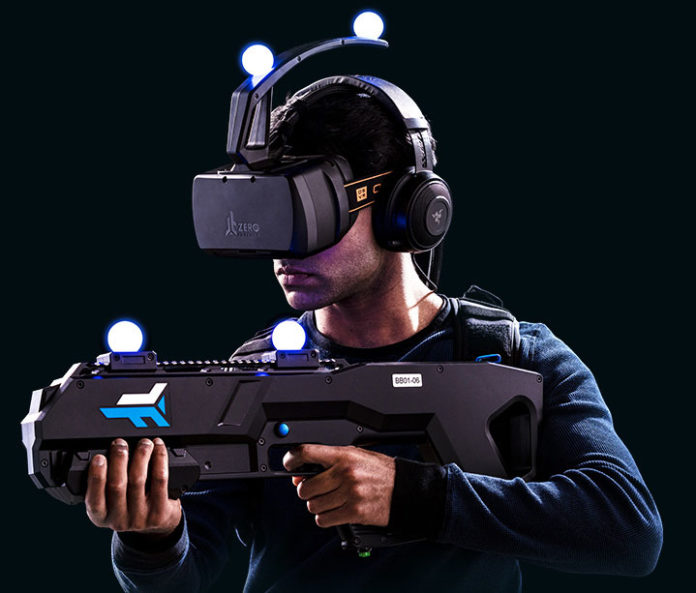Do you want to break away from the boundaries of your living room to play games with a group of friends in VR? The Australian company Zero Latency has come up with a warehouse scale, free-roaming VR game experience you can actually break a sweat in.
The Games
Grab a group of up to 8 friends to try out the first person shooter and combat games Outbreak Origins, Singularity, Zombie Survival and Zombie Outbreak for the best virtual workout. Most games last between 30 to 45 minutes, which is a perfect amount of time to get your legs moving, your mind strategizing and your heart thumping.
The Gear Setup

You’ll be equipped with an OSVR HDK 2 headset display and Razer headphones so you can see in 2K resolution and can hear zombies moaning and shrieking. The headphones and microphone will keep you in communication with your teammates, which is especially helpful if you’re at different locations on a map.

Zero Latency uses a PC gaming backpack from Alienware that will have you looking like a Ghostbuster wearing a Proton Pack (not literally). The backpack keeps you from being tethered to restrictive wires so you won’t have that awful feeling of your head and neck being pulled in various directions.

Stay alive in the game by wielding realistic looking and specially designed guns to help you shoot any incoming hordes of the bloodthirsty dead. Remember, aim for the head, take cover, run and protect your teammates!
How Movement and Space Works
When you begin to play don’t hesitate to move forward or backward, you won’t run into anyone because you’ll see them near you inside the headset. Also, if you are worried about running into a wall, rest assured that Zero Latency warehouses are big enough for 8 people to move around in and have software that prevents you from collisions.
In a Unity Blog post, the company’s Chief Technology Officer, Scott Vandonkelaar, says that their system’s Change Blindness Redirection (CBR) will “help overcome physical constraints. Players are free to explore large environments even in small play areas, like in their very own living rooms, which can now be used as a decrypt town.”
This improves and condenses space usage around the real world warehouse (or living room) and improves the immersion of the map. What the CBR does is it tricks your mind into focusing on the actions and environment happening within the game, while it guides and moves you in the game so you’re not left with a feeling that you’ve been walking in circles.
VR Fitness Potential

Moving around in a zombie game is way better exercise than sitting down and playing a racing or puzzle VR game. If you’re standing up, walking, or running and interacting with the virtual world you’re going to meet your step quota for the day.
You will even get some cardio and muscle action in when you shoot, squat or hop out of the way of zombies coming after you. If you really want to know how many steps you tracked or how many calories you’ve burned you’ll need to wear a heart rate tracker or a smartwatch for more reliable data than guessing.
eSports Potential
Games like Echo Arena and The Unspoken already have eSports leagues that are partnered with Oculus. Warehouse-sized virtual tracking systems at Zero Latency can hold up to 8 players during a game.
If you had two teams of 4, teams of 2v2, or 1v1 you could make e-sport leagues for games like Sparc, Sprint Vector, or other emerging competitive or team games.
Zero Latency
With 2 locations in Australia, 7 in North America, 2 in Japan and 1 in Spain and over 62,000 game plays and over 152,000 players, Zero Latency is taking the world by storm and giving room-scale VR experiences a run for their money.


